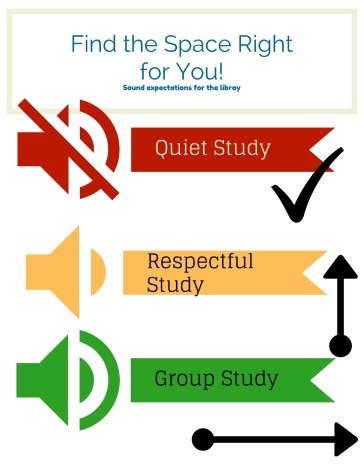I am a huge fan of audio books. I listen to them in my car constantly. I don’t need any encouragement to try another. However if I did need encouragement, I would certainly stop by this display by Katrina Spencer at Middlebury College’s Davis Family Library.

Katrina says,
In the fall of 2018, I launched an effort to diversify my library’s audio book collection hosted by OverDrive. Previously, it almost exclusively featured white authors. However, it wasn’t enough to place works by authors of color on our platform. We needed additional types of diversity to be represented; users needed to know that dozens of new acquisitions had just been made; and a culture of their use needed to be developed. So, I initiated a multi-platform campaign to inform patrons on how to use the technology and to inform them of our wares. In a display set up in a high traffic zone adjacent to the Research Desk, about 15 “book dummies” or wooden blocks were covered with book cover art to display new titles in our collection. I used two mannequins, dressed in popular attire, to represent students who might use the audio books, and I dressed them in popular clothing, adorning their ears with headphones. Along the border of the display, handouts were made available with 5-step instructions on how to use the audio books. What was most effective in making this display a success was when I staffed the desk and personally invited passersby to take a handout.
In a continued effort to promote use of our audio book collection, I developed two slides that would be in rotation on a television screen at the Circulation Desk, another high traffic zone. The slides include book cover art for two works in our audio book collection, Everything’s Trash, But It’s Okay by Phoebe Robinson and Less by Andrew Sean Green. These titles were intentionally selected not only because they display beautiful cover art, but also because they represent at least two genders and at least two races, a small and simultaneously significant nod to the diversity of audio book users to whom I was marketing the collection. Beside the images are step-by-step instructions for how to use the audio book platform and images of headphones and smartphones, modern technologies that reinforce that the promoted materials are mobile and for listening. While the corresponding, physical display for audio books was taken down after about a month so as to reclaim the Research Desk’s space, the slides can remain in rotation indefinitely.

These displays are engaging, clear, and informative – and I love the personal touch to encourage people to listen. Katrina made the flyer for the display in Adobe Illustrator and the digital display in Power Point. Both are available on the Librarian Design Share under a Creative Commons Attribution-NonCommercial-ShareAlike 3.0 Unported license. Thank you for sharing, Katrina!










